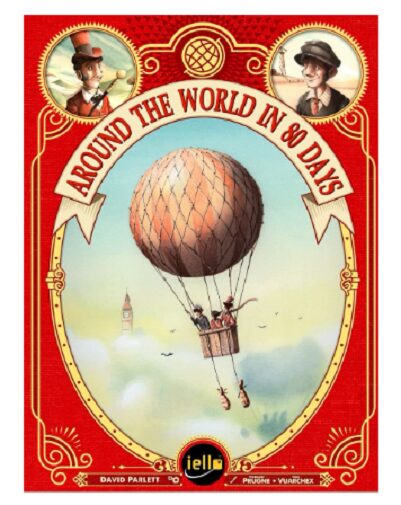Around the world in 80 days (2024)
Around the World in 80 Days
Around the World in 80 Days is a board game designed by Michael Rieneck and published by Kosmos in 2004. The game is inspired by the classic 1873 novel by Jules Verne, where players follow in Phileas Fogg and Passepartout’s footsteps, attempting to travel around the world in 80 days on a limited budget. The game has been published by various publishers between 1874 and 1928, which suggests its popularity with children and/or grown-ups.
Why is Around the World in 80 Days Popular?
Around the World in 80 Days is a popular game because it is based on a classic novel and offers a unique gameplay experience. The game requires players to manage their resources and make strategic decisions to complete their journey around the world within 80 days. The game is significant because it offers a fun and educational way to learn about geography and history.
Game Components of Around the World in 80 Days
How To Setup Around the World in 80 Days
To set up the game, start by placing the game board in the middle of the playing area. Each player chooses a token and places it at the starting point in England. Shuffle the destination cards, transportation cards, and challenge cards, and deal them according to the rules. Distribute the resource tokens and ensure each player has a set of basic resources.
Gameplay Mechanics and Game Objective
Player Experience
Playing Around the World in 80 Days is a delightful mix of strategy and luck. Players must balance resource management with the need to move quickly around the globe. The game’s theme is vividly brought to life through the diverse destinations and challenges, making each game session feel like a unique adventure.
Pros
Cons
Personal Thoughts on Around the World in 80 Days
This game is perfect for families, casual gamers, and anyone who enjoys a light-hearted, strategic game. It’s great for those who appreciate the classic tale by Jules Verne and are looking for a fun, thematic gaming experience. However, players who prefer games with deep complexity or minimal luck may find it less appealing. Overall, Around the World in 80 Days offers a charming and entertaining gaming experience that is sure to delight a wide range of players.
We are supported by our audience. When you purchase through links on our site, we may earn an affiliate commission, at no extra cost for you. Learn more.

